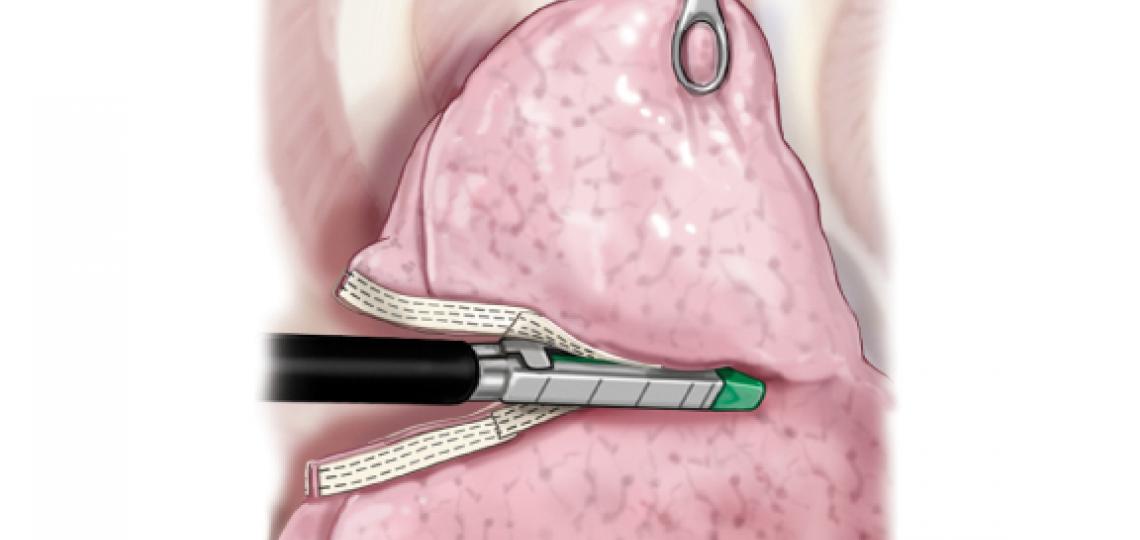Pneumothorax is condition in which air (pneumo) gets into the space between your chest (thorax) and lung.
There are three types:
- Spontaneous pneumothorax: A spontaneous pneumothorax is a collection of air or gas in the chest that causes a lung to collapse. It is frequently caused by rupture of pulmonary blebs and is more common in smokers.
- Tension pneumothorax: A tension pneumothorax occurs when a lung or bronchial injury acts like a one-way valve, permitting air to enter but not escape the chest.
- Iatrogenic pneumothorax: An iatrogenic pneumothorax is due to accidental puncture of the lung during a surgical procedure.
Before Surgery
Patients will typically have a CT scan and pulmonary function testing before surgery. The patient usually receives an epidural to control pain.
Video-Assisted Thoracic Surgery
Three portal incisions are made by the surgeon. A wedge of the upper lobe and a small part of the lower lobe is removed using an endoscopic stapler that is reinforced with pericardial strips. A complete pleurectomy is performed. The chest is filled with an antibiotic fluid for 10 minutes and then drained. Two chest tubes are placed in two of the incisions previously used for the ports.
After Surgery
The chest tubes are suctioned for a few days unless there is an air leak. The epidural is removed two to three days after the surgery and the patient can be sent home on day three or four. The patient can return one to two weeks later to see if the remaining chest tube can removed.








 Credit
Credit
